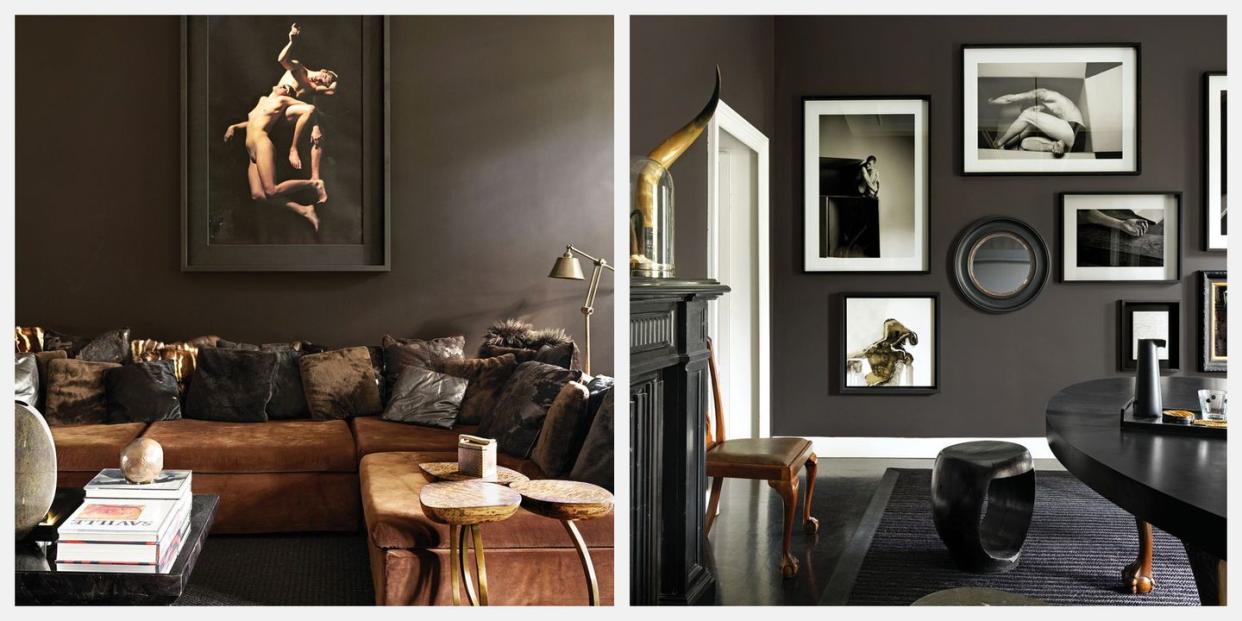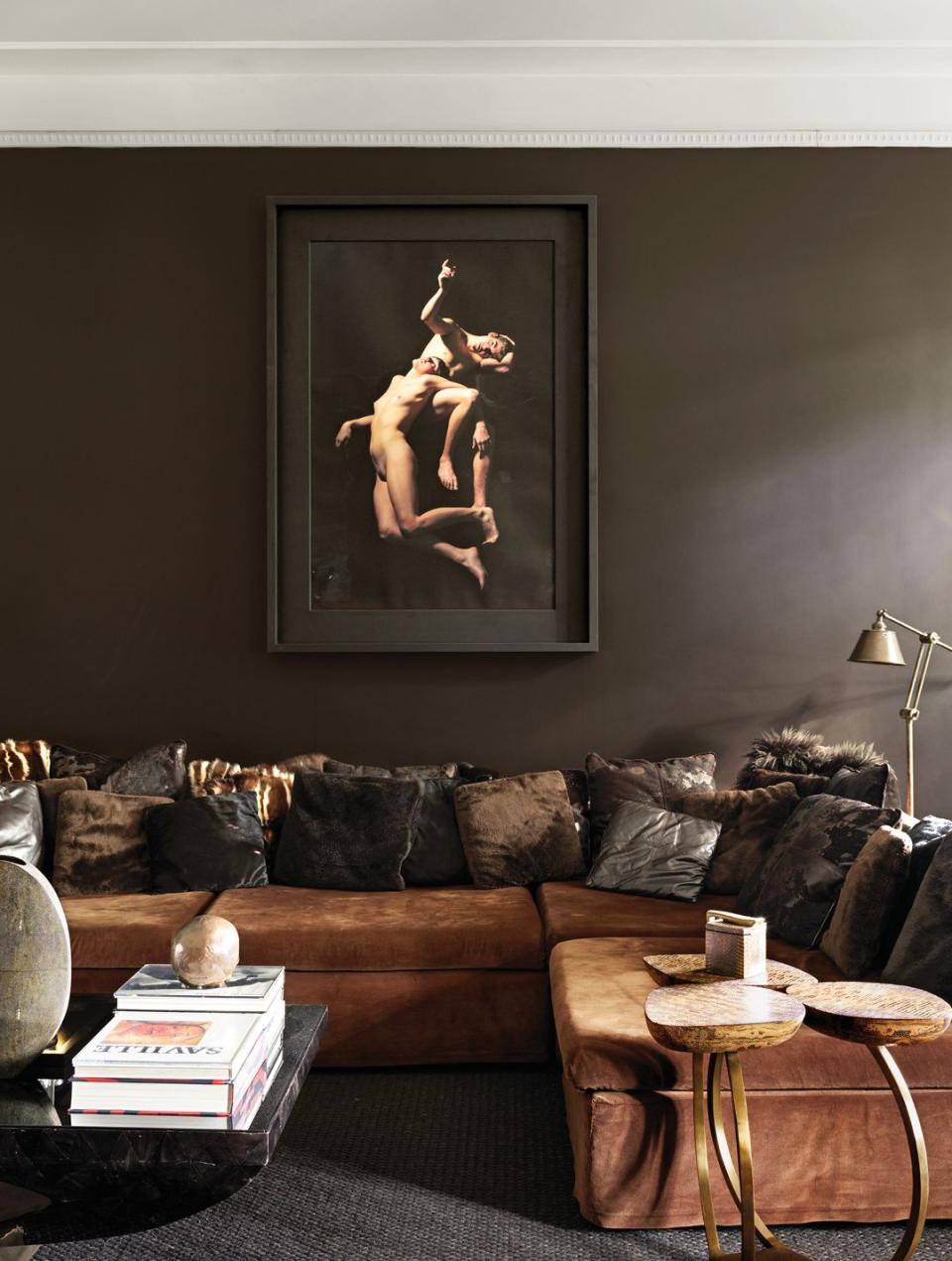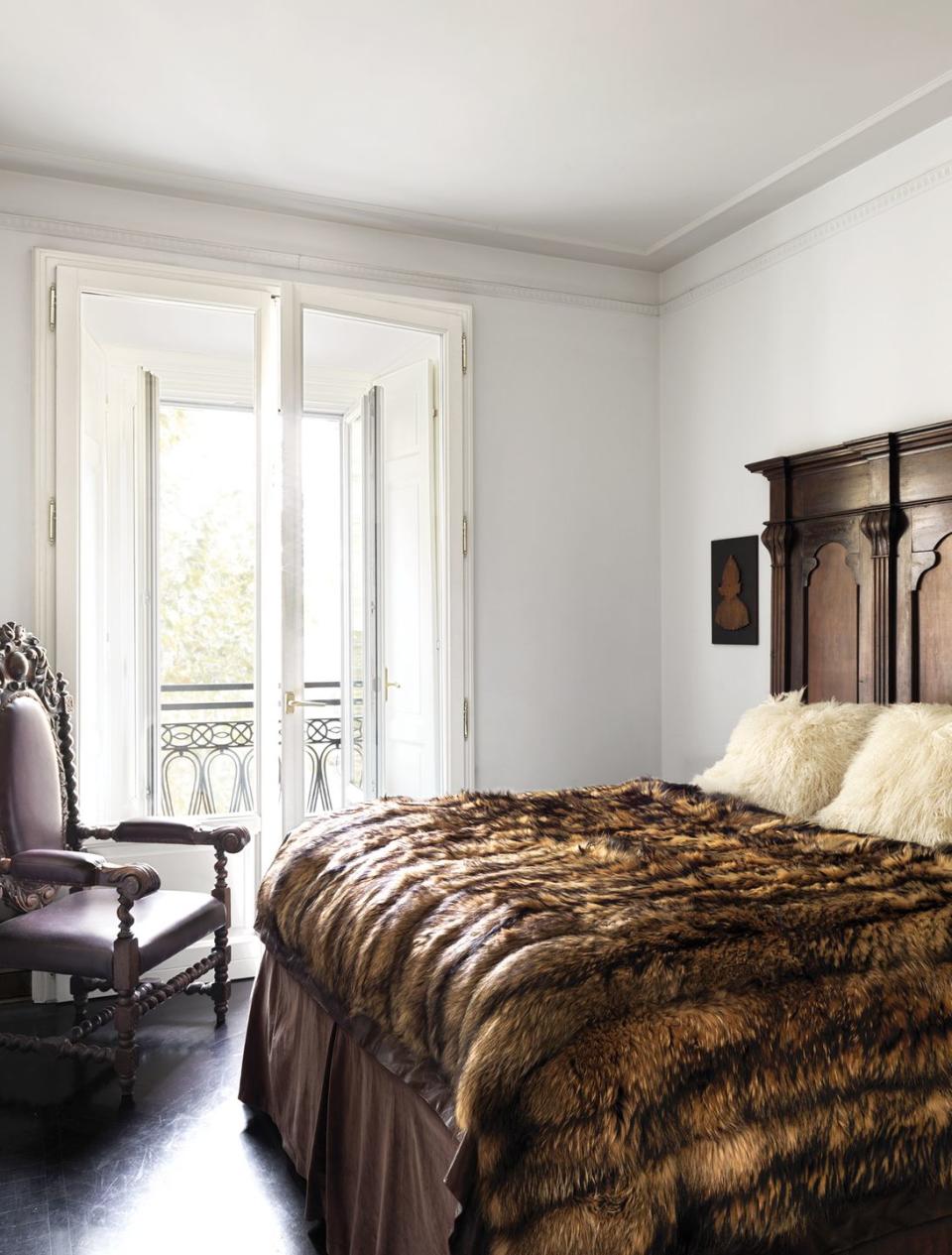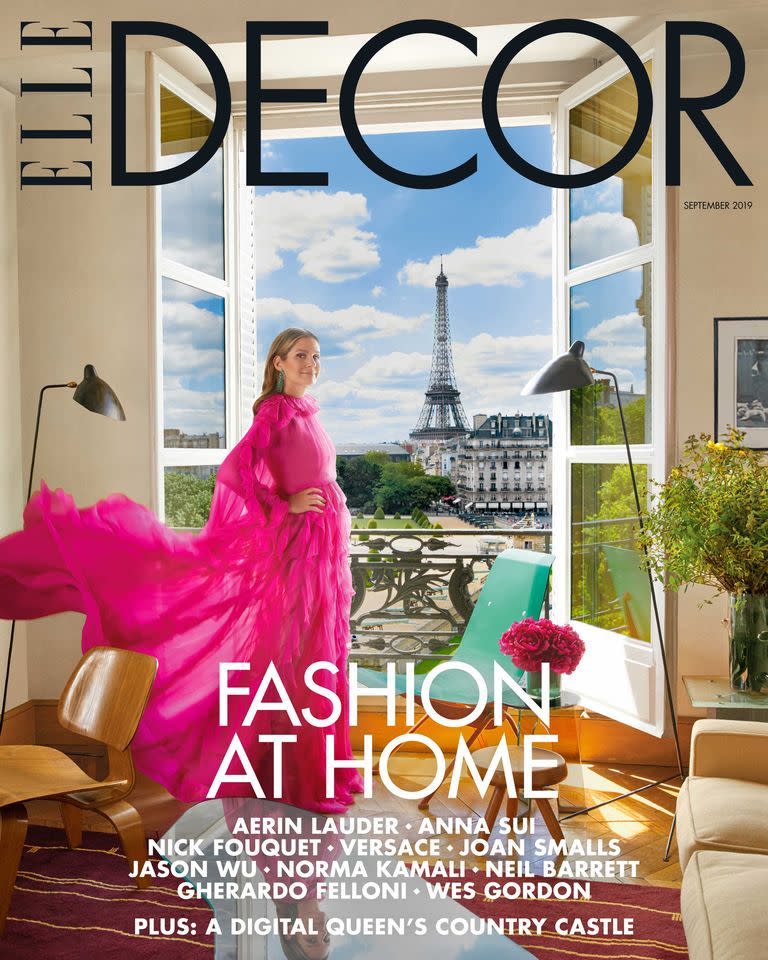This Fashion Designer's Milan Apartment Will Make You Want to Move to Italy

Fashion designer Neil Barrett has a very particular approach to color. From one collection to another, he dyes certain garments the exact same tone. “You can have things from 15 years ago, and they’ll always match my latest pieces,” he explains. The hues in his Milan apartment are similarly studied. Almost everything in it is either white or some shade of brown, even the dining and living room walls, although they may initially appear black. “I like the idea of contrast,” he says of the bichromatic scheme. “Everything I do is quite graphic.”
The apartment is just a 10-minute walk from Milan’s cathedral and close to the remains of an ancient Roman arena. “There’s so much history in the area, and the buildings are stunning,” he says. The neighborhood also has a congenial community feel. His husband and business partner, Carlo Barone Lumaga, knows all the local shopkeepers by name; many of them have been there for decades. Lumaga often starts his day with an outing to the legendary Marchesi pastry store, where he buys croissants and an espresso for himself and crostatine for Barrett.

For the couple, who met on Capri nearly two decades ago, the apartment’s biggest draws were its huge terrace and the charm of its 19th-century architecture. From the building’s arched entryway to its old-fashioned elevator, it has an authentic Milanese flavor. “If you’re going to live abroad,” Barrett says, “you should feel 100 percent that you’re in your adopted country.”
Born into a military tailoring family in southwest England, Barrett moved to Italy in the early 1990s, when he was appointed menswear designer at Gucci shortly after he graduated from London’s Royal College of Art. After a few years at Gucci, he moved on to Prada to start the brand’s menswear line. In 1999, he left to launch his own eponymous mens- and womenswear lines, which soon attracted fans like Brad Pitt, Orlando Bloom, and Angelina Jolie. Today, the Neil Barrett label counts 23 freestanding stores around the world and headquarters in London, Switzerland, and Milan. The latter is in the same complex as the chic, Dimore Studio–designed Ceresio 7 restaurant, in a light-flooded building that once housed a school run by the Italian electricity board.
Inside, though, the apartment is distinctly dark and atmospheric. “We thought, We’re working all the time, so let’s enjoy our home more as an evening thing,” Barrett says. He and Lumaga made numerous changes to the layout. By reducing the size of the kitchen, they were able to enlarge the living room. They also added an extra bathroom and created a capacious new dressing room, which doubles as a home gym. “Wherever I am in the world,” Barrett notes, “I get up and work out at around seven in the morning.”

What the interior may lack in tonal diversity, it certainly makes up for in rich textures. The kitchen floor is lined in sheet metal, beds are topped with goat’s-hair throws, and there are numerous tactile items by Barrett’s longtime friends, designers Ria and Yiouri Augousti, including eel-skin vases and shagreen-clad stools. The decor also attests to his predilection for photography (especially images of the human body) and a love of the natural world. “I have this fascination with animals, insects, and birds,” he says. “They’re the most beautiful 3D creations that can constantly inspire.”
Several family heirlooms have also made their way into the apartment, including a Victorian mahogany dining table. Indeed, after nearly 30 years in Italy, Barrett still considers London home—even though he no longer has a residence there. “When you’re British, you always feel that,” he says. At times, he has considered moving back, but says he would miss living in proximity to the high-end fabric producers he depends on for his fashion collections. Not to mention one other significant factor—the Italian weather!

This story originally appeared in the September 2019 issue of ELLE Decor. SUBSCRIBE
You Might Also Like

